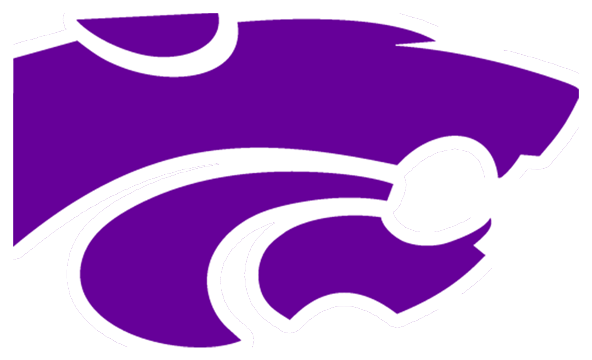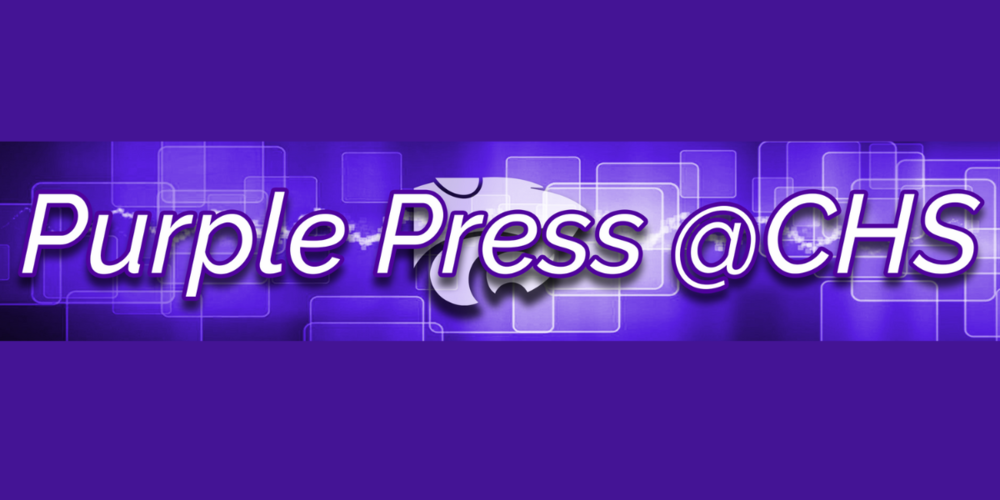Halloween Article
Written By- King Lucero: Editor In Chief
Elena Rodriguez: Editor In Chief
Oliva Holland: Staff Writer
Halloween is known to be spooky, and a holiday that can put you on a sugar high. However, what are its origins? How did modern culture start reflecting off of the holiday? And how did some misrepresentations of Halloween arise? Halloween started off from the ancient Celtic festival of Samhain. The people that practiced the ancient traditions were called The Celts, who lived 2,000 years ago, found mostly in the area that is now Ireland, the United Kingdom and northern France, they used it as a way to celebrate their new year on November 1-2. This day marks the end of summer, and the harvest beginning of the dark, cold winter and because of the lack of modern technology, it was associated with human death. Celts believed that on the night before New Year, the boundary between the worlds of the living and the dead became blurred. On the night of October 31, they celebrated Samhain, when it was believed that the ghosts of the dead returned to earth. In summary, it's a way to celebrate the worlds of the living and the dead becoming blurred, celebrating ghosts returning to earth. It then made its way to America with immigrants. Colonial Halloween festivities also featured the telling of ghost stories and mischief-making of all kinds. By the middle of the 19th century, annual autumn festivities were common, but Halloween was not yet celebrated everywhere in the country. This history accumulated multiple little traditions that still sit with us in the modern world today and follow us throughout more Halloweens to come. These little traditions and their origins include:
Seeing Ghosts:
The ancient Celtic festival of Samhain marked the new year, which began with the end of the harvest and the start of winter. During this celebration, the Celts held a belief that spirits and ghosts could move among the living. Much later, the Christian observance of All Souls' Day on November 2 was introduced by missionaries, which continued the tradition of interacting with the deceased at a similar time of year.
Wearing Scary Costumes:
To protect themselves from the malicious spirits that roamed the Earth during Samhain, the Celts wore disguises to trick the ghosts into leaving them alone. The costumes were often made from animal skins and heads, which would help the living blend in with the supernatural visitors.
Black Cats:
Superstitions about being frightened by black cats date back to the Middle Ages when these dark-furred felines were seen as a representation of the Devil. Several centuries later, the belief grew stronger when women accused of witchcraft were often found to have cats, especially black ones. This led people to believe that the cats were "familiars", supernatural creatures that helped witches with their dark magic, and ever since, a connection has existed between black cats and all things spooky.
Orange and Black:
The colors most associated with Halloween, black and orange, also have roots in the Celtic festival of Samhain. For the ancient Celts, orange signified the vibrant autumn harvest, whereas black symbolized the "death" of summer and the onset of winter's darker days.
Bats:
As part of the Celtic festival of Samhain, large bonfires were lit, which drew insects and attracted bats to the festivities. The presence of these flying creatures became linked with the autumn holiday. This connection was further cemented in the Middle Ages, when bat sightings fed into folklore and superstitions that portrayed them as eerie omens of death.
Devouring Candy:
Halloween revelers have long gone door-to-door for treats, a practice with a history that predates the mid-20th century. Until that time, the "handouts" often included items like fruit, nuts, coins, or toys, rather than just candy. The rise of trick-or-treating in the 1950s prompted candy companies to market small, individually wrapped confections. This shift was initially driven by convenience, as pre-packaged sweets were easier for homeowners to distribute. However, candy didn't fully replace other treats until the 1970s, when parents became wary of unwrapped goods because of widespread safety fears.
Trick-or-treating:
Trick-or-treating traces its lineage back to the 20th century, broader European rites. In those days, communities would set out food on Samhain hoping to soothe wandering spirits. That modest offering eventually blossomed into a door-to-door custom; often hidden behind disguises, accompanied by verses or prayers as the dead seemed to barter for a bite. In Britain and Ireland, the practice was known as “souling”. When Irish and Scottish immigrants crossed the Atlantic, they brought the habit with them. Over time, it has morphed into a modern, socialized celebration that has absorbed elements from ancient religious and folk practices over centuries, which mutated into the trick-or-treat tradition we know today. Eventually, with children dressed up in any type of cute or scary Halloween costumes wandering from door to door begging for sweets.
Pranking:
Halloween pranks started off as ways to ward off evil spirits, which eventually evolved into playful mischief. By the 1800s and 1900s, prank-making had become a staple across the United States; ranging from innocent and harmless jokes, like soaping windows or tipping over outhouses, to outright destructive antics. In response to this, towns and neighborhoods began staging Halloween celebrations and organized activities in hopes to funnel energy into a safer and more controlled fun. Despite the attempts to rein in the vandalism, the Halloween prank tradition endures, now largely confined to warm-hearted mischief. Today, Halloween pranks consist of TP-ing houses; which involves throwing rolls of toilet paper over houses or trees. Egging; throwing eggs at houses or cars, as well as spooky sounds; that could conclude making eerie noises like howling, crackling, scratching at windows, or playing evil laughter through a loudspeaker.
Candy apples/Bobbing for apples:
The golden era of candy apples was the early 1900s. It was invented in 1908 by William W. Kolb, a candymaker in the Newark area. Shortly thereafter, William was experimenting with red cinnamon candies at Christmas and dipped some apples into the concoction to use them up. The result was a delectable and visually stunning treat that became popular overnight. For the very reasonable price of 5 cents a piece, candy apples quickly found their ideal environment in fairs, carnivals and Halloween parties. The tartness of the apple and the sweetness of the candy coating combined to elevate it as a favorite Halloween-time treat.
Bobbing for apples is a well-known and loved Halloween game that can be traced back to the ancient past. It had begun with the festival of Samhain, which was celebrated by the ancient Celts, who considered apples to be holy and symbols of productivity and plenty. When the Roman Empire expanded into what we call the British Isles, they too embraced Samhain and incorporated it into their practices. Essentially, bobbing for apples became a stable activity, maintaining its association with fun and games.
Candy Corn:
During the early 20th century, candy corn had begun to become popular, and it became associated with Halloween because of the fall harvest season. The combination of its eye-catching, triangular silhouette and surgery bite won over both kids and grown-ups alike. Though candy-making methods and taste preferences have shifted over the years, candy corn stubbornly remains a Halloween essential. The treat’s straightforward, simple recipe and recognizable shape have helped maintain its place in the holiday’s tradition over the years.
Lighting candles and bonfires:
The tradition of lighting candles and bonfires on Halloween goes way back to the ancient Celts practices. The Celts had believed that the Samhain, a boundary between the dead and the living was blurred, and spirits could roam freely. Bonfires were lit to honor the dead and ward off evil spirits. Today, while the original spiritual meanings may have faded over the years, the tradition of lighting candles and bonfires on Halloween remains a popular tradition.
Carving jack-o'-lanterns:
A tradition that had originated in Ireland is called “Carving Jack-o'-lanterns”. In the 1600s, instead of using pumpkins, people carved turnips and potatoes, placing candles inside to ward off evil spirits, especially Stingy Jack. A legend where Jack repeatedly trapped the devil and only let him go on one condition, which is Jack would never go to hell. Irish immigrants brought this custom to America, finding pumpkins easier to carve than turnips. Today, people also carve scary faces into pumpkins and put them out for decoration. Then the jack-o'-lantern became a symbol of Halloween, representing both fun and old beliefs.
However, with these staples in Halloween, some misrepresentations could show up with passing it down by traditions or wives' tales. Some can be misused, for example, most people know Halloween as a celebration of evil. The Halloween imagery, such as ghosts, witches, and demons, corresponds to the evil-related symbolism. The symbols depicted in forms of costumes and decorations that evoke the sense of dread and peril. Additionally, Halloween's emphasis on themes such as death, and the afterlife, and the unknown can be unsettling for those who believe these concepts glorify dark forces.
Well, Halloween is also for kids, right? Not quite. It is known to be a holiday for kids to dress up and get candy, going house to house joyfully saying, “Trick or treat!”. This was not its original intention. Despite its reputation as a kids' holiday, Halloween has a rich history rooted in ancient adult pagan rituals and has become a modern celebration embraced by all ages, especially younger adults. For many adults, Halloween is less about candy and more about creative expression through costumes, decorating, and attending parties, offering psychological benefits like stress relief and strengthening social bonds. In fact, recent consumer spending data shows that Gen Z and millennials are the biggest spenders on Halloween and are highly engaged in various festivities, whether attending parties, visiting attractions, or even trick-or-treating with young relatives. Ultimately, this ancient tradition provides a valuable opportunity for people of all ages to engage in imaginative play, escape daily pressures, and connect with their community in a fun and lighthearted way.
Well, there are many ways that Millennials and Gen Z have affected Halloween spending money and such, so how did they or modern culture change it? Well, the most common thing for adults to do on Halloween is watching a classic horror movie so why do they like horror movies so much?
21st Century Movies
Horror movies and Halloween go hand in hand during this season. Most kids go trick or treating for the fun of wearing costumes and eating candy. But for the Gen Z and the Adults stay home give out candy but most of all watch a good Horror Movie.
The first horror movie to be made was titled “Le Manoir Diable” or The House of the Devil. But why did they make it? They made this movie to showcase and push the limits of early filmmaking technology; it was not primarily intended to make people scared.
It was made in 1896. Like all the movies during that time period, it was only 3 minutes long. The movie was not supposed to put fear into the audience but amusement and wonder. This is the first horror movie with the vampire character in movie fiction. It has ghouls and the Devil. This movie was the father of horror in a sense.
The most well-known horror movies offer the fear factor but also great storytelling, like. IT the horror movie about a killer clown that feeds off fear. Also, The Ring about a ghoul comes out of a TV after putting a tape in. Even Jaws, a man-eating shark, was the scariest part being not seeing the shark a lot but the horror of people getting attacked. This is all good fun, but why? Why do we like getting scared from the jump scares, gore, the scary messages of these movies? Why do we like horror movies?
On the psychological side of things, Psychologists say “They offer a controlled way to experience fear, which releases adrenaline and is followed by a rush of pleasure and relief, a feeling of empowerment from practicing emotional regulation, and a sense of social bonding”. It goes from thrill-seeking in a sense, from the adrenaline rush you get from getting scared. It's a form of stress relief. It can also bring that nothing is sweet and nice. But can bring dark themes. We watch these movies out of morbid curiosity.
Sources:
https://blogs.loc.gov/headlinesandheroes/2021/10/the-origins-of-halloween-traditions/
https://www.history.com/articles/history-of-halloween
https://www.thewoodword.org/opinion/2015/10/31/halloween-not-just-for-kids/
QIHSEpL8MQsZYEegQINRAC&biw=1366&bih=768&dpr=1&safe=active&ssui=on
https://editorial.rottentomatoes.com/guide/best-horror-movies-of-all-time/
https://hbr.org/2021/10/the-psychology-behind-why-we-love-or-hate-horror
Purple Press is a publication vehicle for student expression.
The school board encourages students to express their views in school-sponsored publications and to observe rules for responsible journalism. This means expression that falls into any of the following categories shall not be permitted: any expression which is false or obscene, libelous, slanderous, or defamatory under state law, which presents a clear and present danger of the commission of unlawful acts, violation of school rules or materials and substantial disruption of the orderly operation of the school or which violates the privacy rights of others.
Student editors of school-sponsored publications are responsible for determining the news, opinion, and advertising content of the publication. The publication's advisor is responsible for supervising the production of the publication and for teaching and encouraging free responsible expression and professional standards of journalism.
The views expressed in the Purple Press are not necessarily those of Clovis High School or the Clovis Municipal School Board of Education.
Advisor: Augustine Martinez


